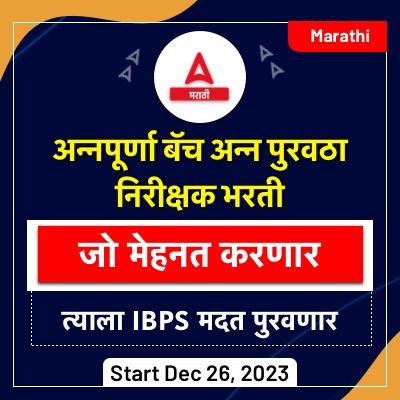Table of Contents
Date: 11 July 2024
Gig Workers
Karnataka has proposed the Platform-based Gig Workers (Social Security and Welfare) Bill, 2024
- India had 77 lakh gig workers at the beginning of the decade. By 2029-30, gig workers are projected to account for 6.7% of the non-agricultural workforce.
What are the key features of the proposed Karnataka bill?
- Aims to prevent arbitrary dismissals
- Provides human grievance redress mechanisms
- Brings more transparency into automated monitoring and algorithm-based payments
- Offers social security through a welfare board and fund
- Requires contributions from the government and aggregators
- Mandates registration of gig workers with the welfare board
How does this bill compare to existing legislation, and what are its limitations?
- It’s a step up from the Union government’s Code on Social Security, 2020
- Still stops short of providing gig workers with the security of being ’employees’
- Workers’ unions demand welfare fee as a cess on each transaction rather than on profits (as platforms report minimal profits to avoid contributions)
- Sceptics note the ineffectiveness of other unorganized sector welfare boards
- Similar legislation in Rajasthan has been put into cold storage by the new government
What further steps are needed to protect gig workers’ rights?
- Karnataka government needs to quickly formulate rules and establish the welfare board
- Comprehensive national legislation is needed to:
- Set minimum wages
- Establish reasonable working hours and conditions
- Provide robust social security
- Grant gig workers the status of ’employees’
- Ensure visibility of gig workers in the eyes of the law through mandatory registration
Can you answer the following question?
The gig economy in India is rapidly expanding, yet gig workers remain in a precarious position due to lack of comprehensive regulation. Critically examine the challenges faced by gig workers and evaluate the effectiveness of recent legislative efforts, such as Karnataka’s Platform-based Gig Workers Bill, in addressing these issues
India’s demographic journey of hits and misses
How has India’s population dynamics changed over the decades, and what are its current trends?
- Fertility rates have fallen since the 1970s, now below replacement level.
- According to the National Family Health Survey (NFHS)-5, India’s total fertility rate (TFR) decreased from 3.4 to 2 between 1992 and 2021, dropping below the replacement level of 2.1.
- Significant reductions in maternal and child mortality
- Life expectancy has increased
- Demographic shift towards an ageing population (projected to be 19.5% by 2050)
- Rapid rural to urban migration
What progress has India made towards achieving the Sustainable Development Goals (SDGs)?
- Poverty reduction: Population living below poverty line reduced from 48% to 10% between 1990 and 2019
- Hunger: Proportion of population suffering from hunger reduced from 18.3% in 2001 to 16.6% in 2021
- Health improvements:
- Maternal Mortality Rate decreased from 384.4 in 2000 to 102.7 in 2020
- The infant mortality rate also reduced from 66.7 deaths per 1,000 live births in 2000 to 25.5 deaths per 1,000 live births in 2021.
- Self-sufficiency in crop production achieved
What are the main challenges India faces in achieving the SDGs by 2030?
- Income inequality: Top 10% of population holds 77% of national wealth
- Malnutrition: India contributes a third of the global burden. In the Global Hunger Index (2023), India’s rank was 111 out of 125 countries.
- Double burden of communicable and non-communicable diseases
- Gender inequality and low women labor force participation
- Rapid urbanization straining urban infrastructure
- Ageing population requiring long-term planning for geriatric care and social security
What measures are suggested for India to achieve the SDGs while addressing its population dynamics?
- Harness demographic dividend by creating job opportunities for youth
- Address changing health needs, especially non-communicable diseases
- Strengthen safety nets to prevent families from slipping into poverty due to health expenditures
- Increase budgetary allocation for health and nutrition sectors
- Adopt a gender-equal approach and empower vulnerable women
- Multi-sectoral collaboration and strong political will to improve the efficiency of governance.
- Acknowledge changing population dynamics while forming policies (ex: increasing old age population)
- According to the 2011 Census, individuals aged 60 years and above constituted 8.6% of the total population. The figure is projected to rise up to 19.5% by 2050.
- Strengthen nutrition programs like POSHAN Abhiyan to address malnutrition
मासिक चालू घडामोडींवर महत्त्वपूर्ण वनलायनर प्रश्न-उत्तरे PDF – मे 2024
महाराष्ट्रातील सर्व स्पर्धा परीक्षांसाठी ऑनलाईन क्लास, व्हिडिओ कोर्स, टेस्ट सिरीज, पुस्तके आणि इतर अभ्यास साहित्य खाली दिलेल्या लिंक वर क्लिक करून मिळावा.
अड्डा 247 मराठीचे युट्युब चॅनल
अड्डा 247 मराठी अँप | अड्डा 247 मराठी टेलिग्राम ग्रुप
महाराष्ट्र महापॅक












